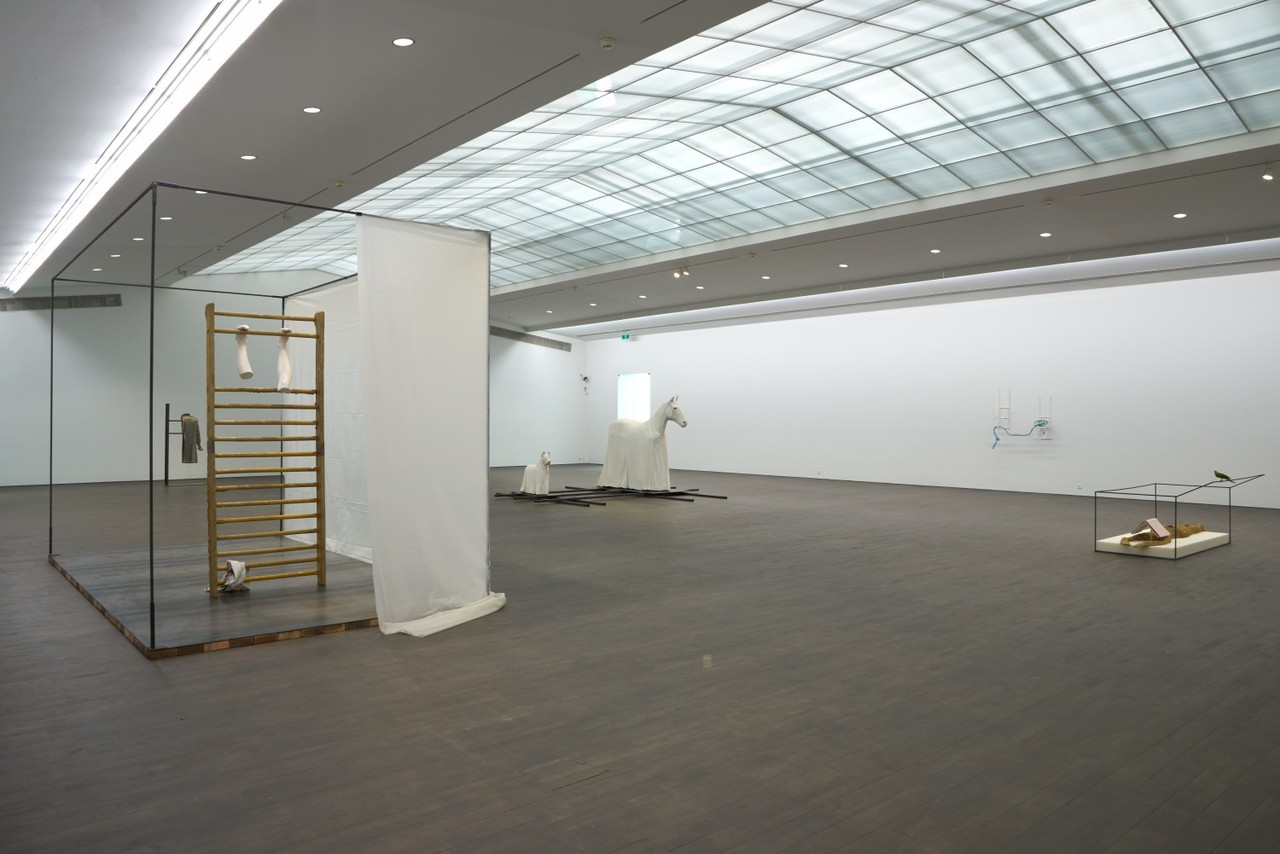Guillaume Leblon
There Is A Man And More
10 Mar - 03 Jun 2018
GUILLAUME LEBLON
There Is A Man And More
10 March - 3 June 2018
S.M.A.K. recently acquired the installation THERE IS A MAN (2016) by the French artist Guillaume Leblon (1971). The museum has thereby added to its collection a key work by one of the most important artists in contemporary sculpture. In the exhibition There is a man and more, S.M.A.K. is showing not only this installation by Leblon, but also a broader selection of his work from the last 10 years. This ensemble provides an insight into the many aspects of his practice.
Guillaume Leblon explores such subjects as the body, space and time. His sculptural installations shift between a poetic articulation of space and an uncomfortable, oppressive atmosphere. One of the core motifs in his oeuvre is the interplay between the body and its absence. In the last few years, the starting point for Leblon’s work has evolved from found remnants and organic materials to e.g. sand, marble and cast aluminium. In the light of his sustained interest in the temporary, Leblon sees this development as a transformation of the relationship between his work and time.
There Is A Man And More
10 March - 3 June 2018
S.M.A.K. recently acquired the installation THERE IS A MAN (2016) by the French artist Guillaume Leblon (1971). The museum has thereby added to its collection a key work by one of the most important artists in contemporary sculpture. In the exhibition There is a man and more, S.M.A.K. is showing not only this installation by Leblon, but also a broader selection of his work from the last 10 years. This ensemble provides an insight into the many aspects of his practice.
Guillaume Leblon explores such subjects as the body, space and time. His sculptural installations shift between a poetic articulation of space and an uncomfortable, oppressive atmosphere. One of the core motifs in his oeuvre is the interplay between the body and its absence. In the last few years, the starting point for Leblon’s work has evolved from found remnants and organic materials to e.g. sand, marble and cast aluminium. In the light of his sustained interest in the temporary, Leblon sees this development as a transformation of the relationship between his work and time.

